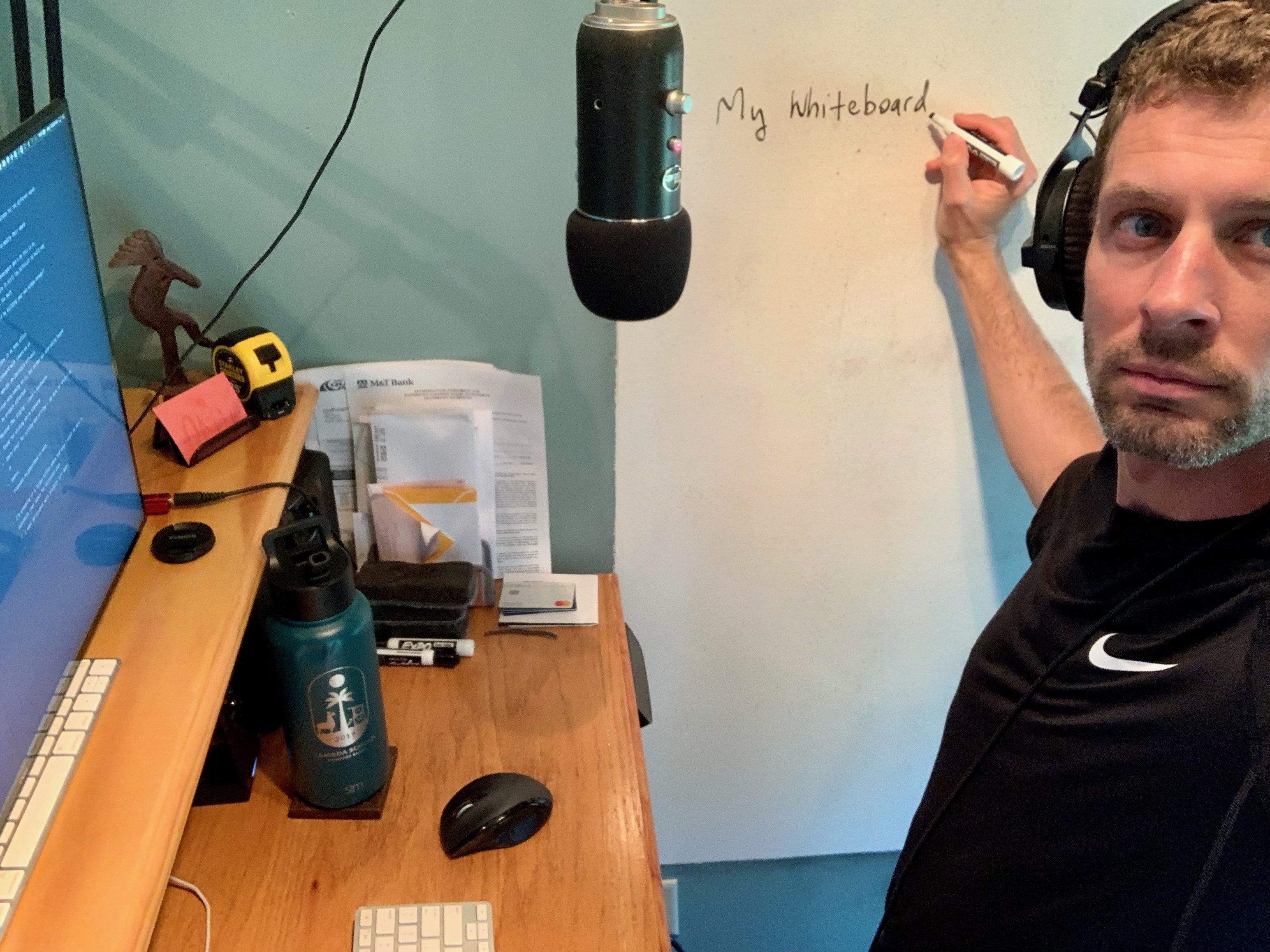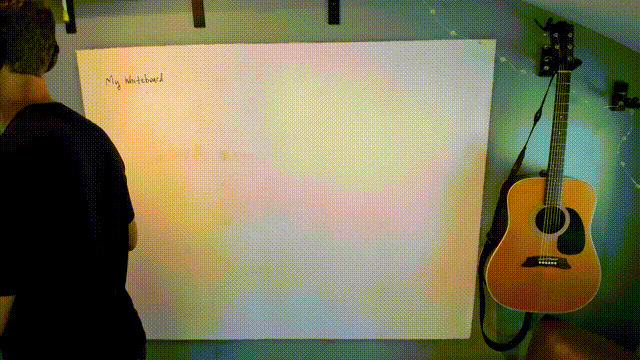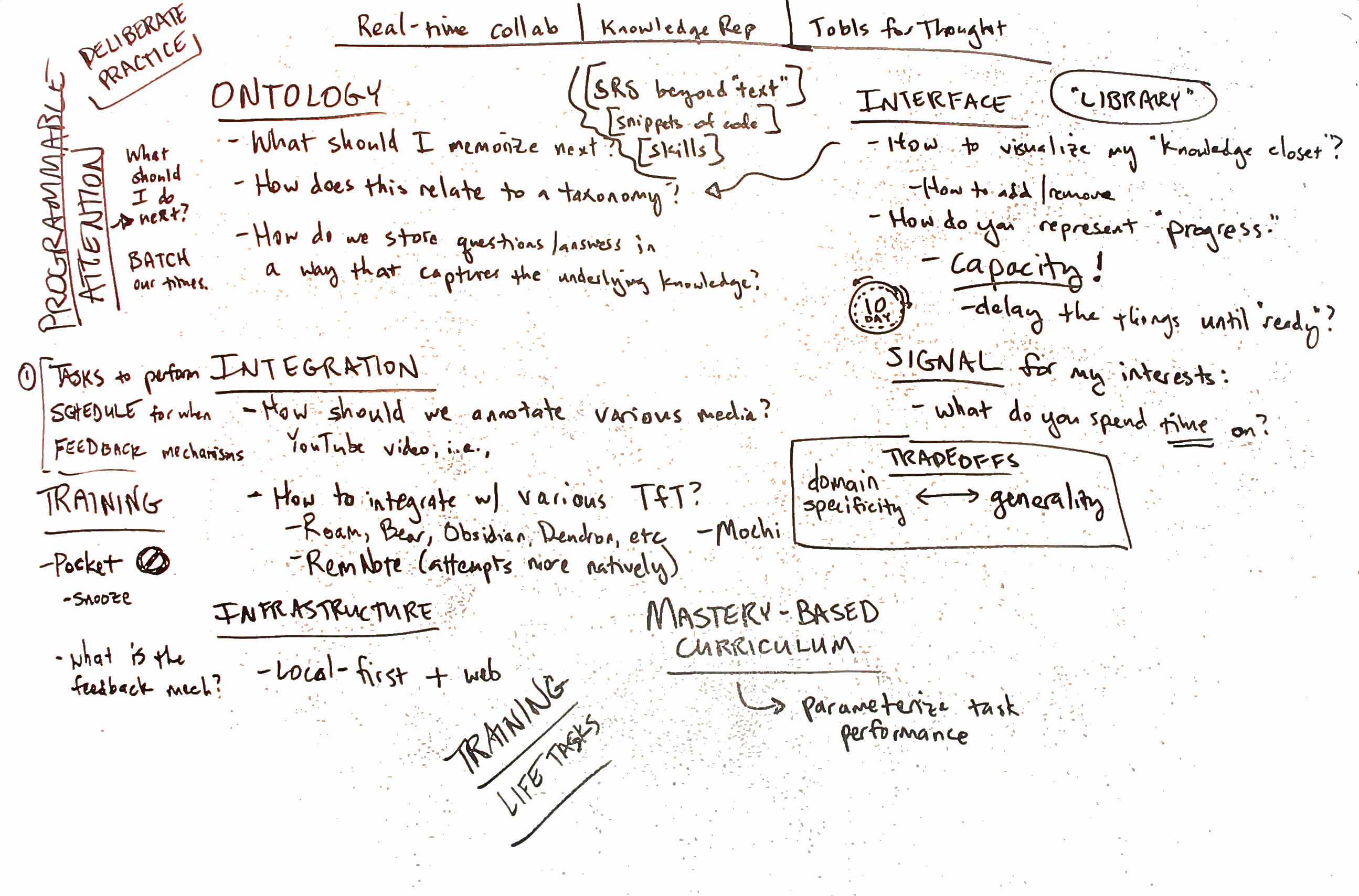Embodied computing
It's Monday and I'm back at my desk, in my home office, after a bunch of travel. I was on the road for three of the last four weeks, in Texas, then Utah, and finally Kure Beach, NC. That means my computing experience was entirely mediated by one of several small, glowing rectangles: my iPhone XR, an iPad, or my M1 MacBook Air. While there's a glorious freedom to the mobile computing experience, travel always makes me yearn for a rich physical computing environment.
What do I mean by a physical computing environment?
Tools need embodiment
For starters, knowledge workers need more than a single glowing rectangle to do their work. Think about all the tools you use as you work: drawings on a whiteboards, scrawlings in a notebook, sticky notes arranged on a wall, index cards scattered about a table. We embody our thoughts in the physical world and use space to arrange them. Our current computer screens are far too limited a palette, in terms of size alone, not to mention the atrocity of software and input devices!
Tools need persistence
Have you ever come across a whiteboard with some elaborate diagram inscribed upon it and "DO NOT ERASE" scrawled in the corner? Our ideas need permanent space, to persist from hour-to-hour and day-to-day. We need to be able to walk away from our work, have a long lunch or take a nap, return to the work, see it afresh, renew our vigor. The cutting edge these days is saving your browser tabs or saving a configuration of windows. We can do better.
Tools need visibility
The best tools invite their own usage. If you play piano, you know the itch in your fingers when you see a piano sitting in someone's home, or even in the airport. Just seeing it makes you want to play it. Our tools need to be readily visible in the environment, inviting us to pick them up, to put them to good use.
I have much more to say on this subject, but I'd like to hear from you as well: what's the most unconventional thing about your workspace setup?
I'm curious about anything from your desk, to the lighting in your office, to how you group your tabs. Show me something crazy.
I'll share one from my workspace: my desk is directly next to a large 5 foot by 4 foot (that's 1.5 meters by 1.2 meters) whiteboard that has a 4K USB webcam pointed at it.
This enables several workflows:
- When I say "directly next to", I mean it: I can write on the whiteboard while working at the computer by simply turning my body. I often use this to make ephemeral notes or sketches while on a Zoom meeting or listening to a talk.

- By taking a single step back from my computer, I'm in the center of the whiteboard and can jot ideas on a canvas about as wide as my writing wingspan. Here's what that looks like:

- The 4K webcam means I can immediately switch to showing my whiteboard during Zoom meetings or livestreams. This often enables me to express my ideas much more rapidly than with keyboard and mouse.
- I take high-res photos of my whiteboard with the 4K webcam, which I can then share with others, archive, etc. I have a simple bash script I use to automatically crop and whitebalance the images so that they look nice. Here's an example:

- I have a laser printer and will sometimes print the photo of my whiteboard in order to have a physical copy to review after I erase. (ideas need persistence, right?)
Send me your outlandish workspace customizations!
Things that caught my eye
- Amelia Wattenberger of GitHub OCTO released Visualizing a codebase, an explorable explanation for how we might look beyond the file structure to understand a codebase. The exploration is fantastically done, and you can plug in your own (open source) repository to explore yourself. Amelia mentions a few future directions that are possible, but this seems like a space with a ton of possibilities, the final culmination of which could be the reinvention of the IDE. Exciting stuff!
- Computing while laying down! I frequently work from outside: reclining in a lounge chair, laying in my hammock, or taking long walks around the neighborhood. Michael Sloan has researched a ton of different positions and creative ways to work outdoors. I'd really like to build a walking desk, similar to what Stephen Wolfram describes here.